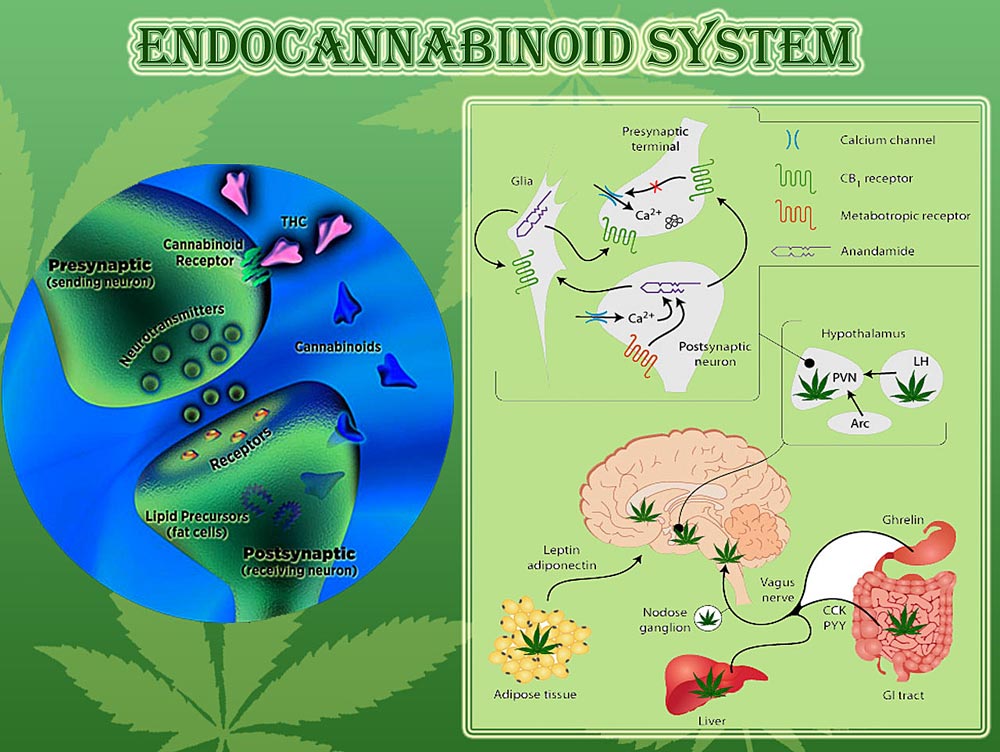
THCa’s Interaction with the Endocannabinoid System (ECS)
Definition of THCa
THCa, or tetrahydrocannabinolic acid, is a non-psychoactive compound found in cannabis plants.
It is the acidic precursor to THCA, which is converted to THC through decarboxylation, a process that occurs when cannabis is heated. THCa interacts with the body’s endocannabinoid system (ECS), a complex network of receptors and neurotransmitters that play a vital role in regulating various physiological processes.
By binding to cannabinoid receptors, particularly CB1 receptors, THCa can modulate the immune response, reduce pain sensation, and potentially offer therapeutic effects. Studies suggest that THCa may have anti-inflammatory, analgesic, and neuroprotective properties, making it a promising candidate for treating a variety of conditions.
While more research is needed, THCa shows great potential in harnessing the therapeutic benefits of cannabis without the psychoactive effects commonly associated with THC.
What is the Endocannabinoid System (ECS)?
The Endocannabinoid System (ECS) is a complex system present in the human body that plays a crucial role in maintaining physiological balance, known as homeostasis. Comprised of cannabinoid receptors and endogenous cannabinoids (substances naturally produced by the body), the ECS regulates various processes, including pain sensation, immune response, mood, appetite, and sleep.
Cannabinoid receptors, primarily CB1 and CB2 receptors, are found throughout the body, including in the brain, immune cells, and various organs. These receptors interact with endogenous cannabinoids, such as anandamide and 2-arachidonoylglycerol (2-AG), as well as with plant-derived cannabinoids from cannabis plants, like THC (tetrahydrocannabinol) and CBD (cannabidiol).
When the ECS is activated, it can have therapeutic effects by modulating and regulating several physiological processes. For example, the activation of CB1 receptors can result in pain relief, while CB2 receptors are involved in reducing inflammation and immune responses. Additionally, the ECS has been implicated in various health conditions, including neurodegenerative diseases, autoimmune disorders, and metabolic disorders.
Understanding the function of the ECS and its interaction with cannabinoid receptors and endogenous cannabinoids can offer insights into the therapeutic potential of cannabinoids in managing chronic pain, inflammation, and other conditions. Further research is needed to fully uncover the potential benefits and mechanisms underlying the ECS for the development of effective cannabinoid-based therapies.
Cannabinoid Receptors and their Role in the ECS
Cannabinoid receptors play a crucial role in the endocannabinoid system (ECS). These receptors, including CB1 and CB2 receptors, are scattered throughout the body, from the brain to immune cells and organs.
They not only respond to endogenous cannabinoids produced by our bodies but also interact with plant-derived cannabinoids found in cannabis plants, such as THC and CBD. When activated, the ECS modulates and regulates various physiological processes. For instance, the activation of CB1 receptors can provide pain relief, while CB2 receptors contribute to reducing inflammation and immune responses.
The ECS’s involvement extends beyond these localized effects, as it has been linked to the progression of neurodegenerative diseases, autoimmune disorders, and metabolic conditions. Understanding the role of cannabinoid receptors in the ECS is crucial for comprehending the potential therapeutic benefits and exploring the therapeutic potential of cannabinoids in addressing a wide range of health issues.
CB1 & CB2 Receptors
CB1 and CB2 receptors are two key components of the endocannabinoid system (ECS) in the human body.
CB1 receptors are mainly found in the brain and central nervous system, where they play a significant role in regulating pain sensation, mood, appetite, and memory. They are also present in other parts of the body, such as the spleen and immune cells, where they modulate immune response and inflammation.
On the other hand, CB2 receptors are primarily located in the immune cells and peripheral tissues, including the gastrointestinal tract and skin. Their main function is to regulate the immune response, inflammation, and pain perception. Activation of CB2 receptors has been shown to have anti-inflammatory effects and therapeutic potential in various conditions, including autoimmune diseases, neurodegenerative diseases, and inflammatory bowel diseases.
While CB1 receptors are primarily associated with the psychoactive effects of cannabis, CB2 receptors have a more significant role in the immune system and inflammation regulation. Understanding the distinct functions and distribution of CB1 and CB2 receptors within the ECS is crucial in harnessing their therapeutic potential for various health conditions.
THCa’s Interaction with Cannabinoid Receptors
While THCa does not directly interact with cannabinoid receptors, it can be converted into THC through a process called decarboxylation, which occurs when heat is applied.
CB1 receptors, primarily found in the brain and central nervous system, are responsible for mediating the psychoactive effects of THC. When THC binds to CB1 receptors, it can alter neurotransmitter release and affect mood, appetite, memory, and pain sensation. This interaction is what gives cannabis its intoxicating properties.
CB2 receptors, on the other hand, are mainly distributed in immune cells and peripheral tissues. When activated, CB2 receptors can modulate immune response and inflammation, resulting in potential therapeutic effects. This is why cannabinoids like THC and CBD have shown promise in treating autoimmune disorders, neurodegenerative diseases, and inflammatory conditions.
While THCa itself does not have psychoactive effects, it may still interact with the endocannabinoid system and other receptors in the body. Some research suggests that THCa may have its own therapeutic potential, including anti-inflammatory and neuroprotective effects. However, further studies are needed to fully understand THCa’s interaction with cannabinoid receptors and its potential benefits in clinical practice.
In summary, while THCa does not directly interact with cannabinoid receptors, its conversion to THC allows for interaction with CB1 receptors in the central nervous system, leading to psychoactive effects. Additionally, THCa may have its own therapeutic properties that warrant further investigation.
Signaling Pathways Involved in THCa’s Interaction with Cannabinoid Receptors
THCa’s interaction with cannabinoid receptors involves intricate signaling pathways within the endocannabinoid system (ECS). When THCa binds to cannabinoid receptors, such as CB1 and CB2, it triggers a series of downstream effects and cellular responses.
Activation of CB1 receptors by THCa leads to the inhibition of adenylate cyclase and subsequent reduction in cyclic adenosine monophosphate (cAMP) levels. This inhibitory effect on cAMP modulates neurotransmitter release and affects various physiological processes like mood, appetite, memory, and pain sensation.
THCa’s interaction with CB2 receptors, primarily found in immune cells and peripheral tissues, can modulate immune response and inflammation. This activation of CB2 receptors leads to reduced release of pro-inflammatory cytokines and a decrease in immune cell activation, resulting in potential therapeutic effects for conditions such as autoimmune disorders and inflammatory conditions.
These signaling pathways within the ECS involve G protein-coupled receptors (GPCRs). Upon THCa binding to cannabinoid receptors, GPCRs undergo conformational changes, leading to the activation of intracellular signaling cascades. These cascades can involve various second messenger systems, such as the phosphoinositide 3-kinase (PI3K)-Akt pathway, mitogen-activated protein kinase (MAPK) pathway, and others, which ultimately mediate the cellular responses within the ECS.
THCa’s interaction with cannabinoid receptors involves intricate signaling pathways within the ECS. Activation of CB1 and CB2 receptors leads to downstream effects on neurotransmitter release, immune response modulation, and inflammation. Understanding these signaling pathways is important for unlocking the therapeutic potential of THCa and other cannabinoids in various clinical applications.
Effects of THCa on the ECS
The endocannabinoid system (ECS) plays a crucial role in maintaining balance within the human body. THC (tetrahydrocannabinol) is the well-known psychoactive component of cannabis plants, but its precursor also interacts with the ECS.
THCa exerts its effects by binding to cannabinoid receptors, specifically CB1 and CB2 receptors. Activation of CB1 receptors by THCa can modulate neurotransmitter release, influencing various physiological processes such as mood, appetite, memory, and pain sensation. THCa’s interaction with CB2 receptors, primarily found in immune cells and peripheral tissues, can help regulate immune response and inflammation, potentially providing therapeutic benefits for conditions like autoimmune disorders and inflammatory conditions.
These interactions within the ECS involve intricate signaling pathways mediated through G protein-coupled receptors and second messenger systems, ultimately affecting cellular responses. Understanding the effects of THCa on the ECS offers insight into its potential therapeutic potential and beneficial effects.
Therapeutic Benefits of THCa on the ECS
THCa, the acidic precursor of THC found in cannabis plants, interacts with the Endocannabinoid System (ECS) by binding to cannabinoid receptors. The ECS plays a crucial role in regulating various physiological processes, including immune response, pain sensation, and stress responses.
There are two main types of cannabinoid receptors in the ECS: CB1 and CB2. CB1 receptors are primarily found in the central nervous system, while CB2 receptors are mainly located on immune cells and peripheral tissues.
When THCa binds to CB1 receptors, it can have therapeutic effects such as analgesic and neuroprotective properties, without causing the psychoactive effects associated with THC. On the other hand, THCa’s interaction with CB2 receptors helps modulate immune responses, offering potential benefits for inflammatory conditions and autoimmune disorders.
The signaling pathways involved in THCa’s effects on the ECS include the inhibition of adenylate cyclase, regulation of intracellular calcium levels, and modulation of protein kinase activity. These pathways influence various processes within the body, including pain perception, metabolism, and inflammation.
Overall, THCa’s interaction with cannabinoid receptors in the ECS shows therapeutic potential for a range of conditions. As research continues, a better understanding of the specific effects and mechanisms of THCa on the ECS can further support its use in cannabinoid therapy.
Anti-inflammatory Effects of THCa on the ECS
THCa’s interaction with cannabinoid receptors in the endocannabinoid system (ECS) involves various signaling pathways that contribute to its anti-inflammatory effects.
When THCa binds to CB1 receptors, it can activate the ECS and initiate several signaling pathways. One such pathway involves the inhibition of adenylate cyclase. This leads to a decrease in the production of cyclic adenosine monophosphate (cAMP), reducing cellular activity and dampening pain sensations. Additionally, THCa can regulate intracellular calcium levels, which play a role in neurotransmitter release and neuronal function. By modulating calcium levels, THCa can help alleviate chronic pain and neurodegenerative diseases.
THCa also interacts with CB2 receptors, primarily located on immune cells and peripheral tissues. Activation of CB2 receptors by THCa can lead to the modulation of immune responses and an overall anti-inflammatory effect. This is especially relevant in conditions such as inflammatory bowel diseases and autoimmune disorders.
Key molecules and enzymes, such as arachidonic acid and fatty acid amide hydrolase, also play a crucial role in THCa’s interaction with the ECS. Arachidonic acid is a precursor molecule involved in the synthesis of endocannabinoids, which are natural cannabinoids produced by the human body. Fatty acid amide hydrolase is an enzyme responsible for the breakdown of endocannabinoids. By modulating the levels and metabolism of these molecules, THCa can further influence the anti-inflammatory effects of the ECS.
In summary, THCa activates the ECS through its interaction with cannabinoid receptors, particularly CB1 and CB2 receptors. By engaging different signaling pathways, THCa exerts anti-inflammatory effects in the body, offering therapeutic potential for various conditions associated with inflammation.
Clinical Studies on THCA’s Interaction with the ECS
Numerous scientific studies have explored the potential therapeutic effects of THCa and its interaction with the endocannabinoid system (ECS).
These studies have shed light on the mechanisms through which THCa modulates pain, inflammation, and immune responses within the human body. Clinical research has revealed that THCa can bind to CB1 receptors, reducing pain sensations by inhibiting adenylate cyclase activity and regulating calcium levels.
Moreover, the activation of CB2 receptors by THCa has shown promising anti-inflammatory effects, particularly in conditions such as inflammatory bowel diseases and autoimmune disorders. The involvement of key molecules and enzymes, such as arachidonic acid and fatty acid amide hydrolase, further highlights the intricate interplay between THCa and the ECS, providing insights into the potential therapeutic benefits of THCa in various physiological and pathological processes.
By examining the findings from these clinical studies, we can gain a better understanding of the therapeutic potential of THCa and its role in the modulation of the ECS.
The Future of Understanding THCA’s Role in the ECS
Chronic pain is a complex condition that affects millions of individuals worldwide, and finding effective treatments can be challenging. However, a recent study has shed light on the potential of THCa, a non-psychoactive cannabinoid found in cannabis plants, as a viable option for managing chronic pain.
In this study, researchers investigated the effectiveness of THCa in alleviating chronic pain symptoms. The methodology involved conducting a double-blind, randomized clinical trial with a group of participants who had been experiencing chronic pain for an extended period. The participants were divided into two groups, with one group receiving THCa treatment and the other group receiving a placebo.
The results of the study were promising. The group that received THCa treatment reported a significant reduction in pain intensity compared to the placebo group. Moreover, the THCa treatment group experienced improvements in their physical functioning and overall quality of life. These findings suggest that THCa may have a potential therapeutic role in treating chronic pain.
This study highlights the importance of further research into THCa’s role in the endocannabinoid system (ECS) and its potential benefits for individuals suffering from chronic pain. As our understanding of THCa’s mechanisms of action and its interaction with the ECS continues to evolve, it holds promise as a natural and effective treatment option for chronic pain management.
Conclusion
In conclusion, emerging evidence suggests that THCa, a non-psychoactive cannabinoid found in cannabis plants, may offer therapeutic benefits for individuals with neurodegenerative diseases. Clinical studies have shown promising results regarding the impact of THCa on these conditions.
THCa interacts with the endocannabinoid system (ECS) by modulating the activity of cannabinoid receptors CB1 and CB2. Its anti-inflammatory, antioxidant, and neuroprotective properties may contribute to its therapeutic benefits for neurodegenerative diseases. By targeting the ECS, THCa has the potential to regulate various pathways involved in these conditions, offering new avenues for treatment.
Nevertheless, further research is necessary to fully understand the mechanisms underlying THCa’s therapeutic effects on neurodegenerative diseases. Nonetheless, these preliminary findings highlight the promising potential of THCa in improving the lives of individuals suffering from neurodegenerative conditions.


